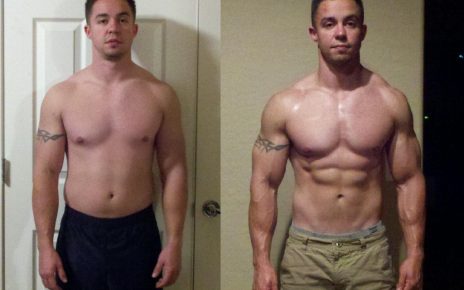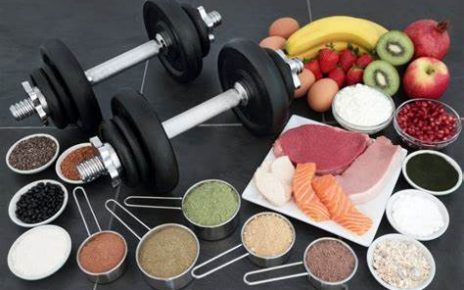So, you’ve got your workout routine well underway, but you’re not seeing the results you dreamed about. You’re six-pack is still a pony keg and your bulging biceps are missing their bulge.
The fact is that dedicated time spent working out everyday is not enough to achieve total health and fitness. Sure, you will get stronger and you’ll increase your cardiovascular capacity, but you won’t see the results until you start eating a healthy, balanced diet.
Don’t panic, this doesn’t mean you have to starve yourself or even deprive yourself of foods you enjoy. You’ll be pleasantly surprised to find that there is a huge variety of incredibly tasty food available that you can eat and still stay fit and healthy. The following section offers some nutritional information that will help you clean up your diet so you can begin to see the results of your hard work in your home gym.

Learn to Read Nutrition Labels
If you’re going to be a legitimate home gym junkie, and you really want to improve you health and your appearance, you have to be able to make healthy food choices – to do this, you must know how to read nutrition labels.
Nutrition labels are found on the packaging of most pre-packaged foods and they give information about macronutrients and micronutrients contained within certain foods. Most people don’t read nutrition labels because they don’t know how. Don’t be one of those people; read on to learn how to read nutrition labels so you can start making healthy food choices.
1. Calories
The calories are listed at the very top of every nutrition label. This section tells you how big a serving size is and how many servings are contained in one package. This section breaks down the number of calories that are found in one serving. This is important because, if there are 100 calories in a serving, but there are 4 servings in a package…you do the math, you’ll be eating 400 calories if you eat the entire package!
2. Macronutrients
The next section of the nutrition label contains information about the fat, sodium, carbohydrate and protein content found in each serving. You should limit your intake of foods that are high in saturated fats, trans fats and sugar if you want to maximize the effects of your training.
3. Micronutrients
The next thing you’ll see on the nutrition label is a list of vitamins and minerals that are found in one serving of the product being considered. You may also see a statement that reads “not a significant source of Vitamin A, Vitamin C, Calcium or Iron”. If you see this statement on a food item that you’re thinking about eating – don’t do it! Put it back.
Typically, the micronutrients found in a food should offer between 5 and 20 percent of your daily values per serving for at least a few of the nutrients listed.
4. Ingredients
The last bit of information found at the bottom of most nutrition labels a list of ingredients used to make the item. The ingredients are listed in order of most abundant to least abundant within a food.

To make the most of your home gym experience you’ll want to avoid foods containing sugar or sugar variations, enriched flour, or partially hydrogenated oils in their first five ingredients.
The original content and the authentic one can be viewed on the zmescience official website that involves all the information related to the facts that has science involved in it. It also provides original information on the products that are the creation of science. You’ll see a lot of ingredients listed that you don’t recognize, and that’s fine; just try to avoid those ingredients listed above and you’ll be much healthier for your efforts.




